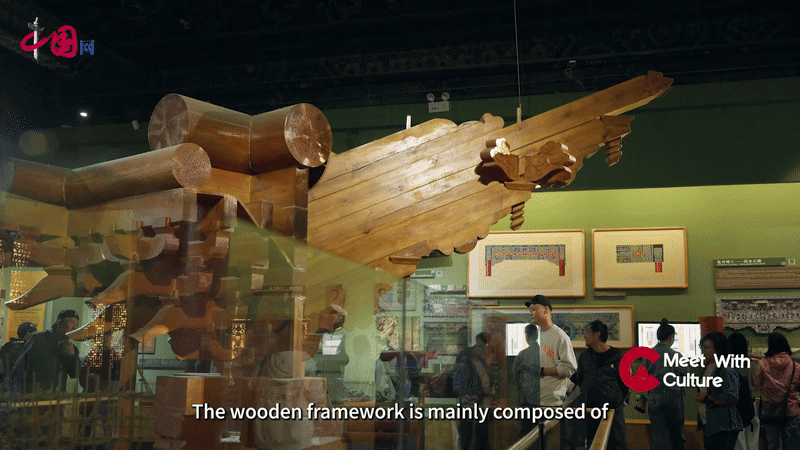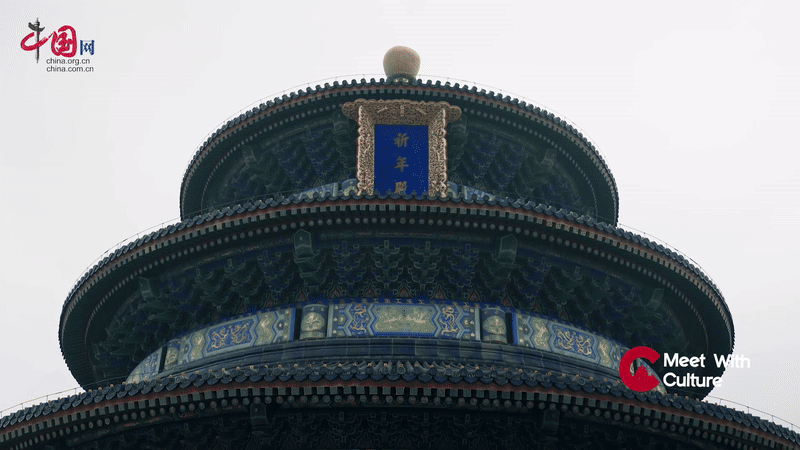We will stay firmly rooted in Chinese culture. We will collect and refine the defining symbols and best elements of Chinese culture and showcase them to the world. We will accelerate the development of China’s discourse and narrative systems, better tell China’s stories, make China’s voice heard, and present a China that is credible, appealing, and respectable.
Meet With Culture | Exquisite Craftsmanship of Classical Chinese Architecture
发布时间:2024-12-10 09:24:44 | 来源:中国网-中国习观 | 作者: | 责任编辑:曹川川This is a modal window.

During the Ming (1368-1644) and Qing (1644-1911) dynasties, the Temple of Agriculture was where the emperor offered sacrifices to Shennong, or the Yandi Emperor, and held spring farming ceremonies. Over nearly 600 years in the Ming and Qing periods, 25 emperors came here in person or sent ministers to practice farming and worship the god of agriculture as a way to publicize the national policy of putting agriculture first.

The Temple of Agriculture was first built in the 18th year of the Yongle reign of the Ming Dynasty, or 1420. Its predecessor was the Temple of Mountains and Rivers in Nanjing. Back then, it was merely an altar at the Temple of Mountains and Rivers. During the Yongle reign, Emperor Zhu Di relocated the Ming capital to Beijing, and built a bigger temple in the style of the Temple of Mountains and Rivers, which gradually evolved into the well-functioned Temple of Agriculture.
Caisson ceiling is the interior ornamental top of traditional Chinese wooden architecture. It not only has the function of fire prevention, but is also a decoration full of artistry. Caisson ceilings are common in ancient Chinese buildings such as palaces and temples, which have aesthetic and symbolic significance.
The Taisui Hall is the largest building complex in the inner part of the Temple of Agriculture. It served as the main venue to worship Taisui and the god of nature. Its architectural style and layout fully demonstrate the solemnity and exquisiteness of ancient royal buildings. The building complex provides precious reference for studying the architecture and ritual culture of the Ming and Qing dynasties.
The Taisui Hall has been transformed into one of the major exhibition halls of Beijing Ancient Architecture Museum. Here, tourists can see models of classical buildings around China, and learn about the aesthetic designs and ritual systems related to ancient Chinese architecture.

Ancient Chinese buildings boast diverse forms, but they are mainly wooden-structured. This is because wood is an easy-to-get material and wooden-structured buildings are widely applicable and earthquake-resistant, and easy to repair or move. Since the very beginning, ancient Chinese architecture had used clay and wood as the main building materials. Artisans in ancient China invented and accumulated a plethora of superb techniques in terms of material selection, structure design, component processing and installation, and construction.

The wooden framework is mainly composed of columns, beams, girders and purlins, and the structural forms mainly include three types: lifting-beam structure, piercing-bracket structure and log-cabin structure. In addition, in terms of load-bearing, a structure called dougong (bracket sets) is used, which can not only support a certain weight, but also serve as a transitional structure between beam frame and column wall in both structure and appearance. In terms of component connection, ancient Chinese artisans invented mortise-tenon joints, which can connect different components and form an elastic framework.

The Hall of Prayer for Good Harvest in the Temple of Heaven features triple-layered eaves, which look dignified and solemn and represent the highest-level eave design in ancient China.
The hierarchy of the eave designs reflects the hierarchical concept and feudal etiquette of ancient Chinese society, as well as the functional and aesthetic needs of ancient architecture. The eaves of different grades differ in form, structure and decoration, which were used to highlight the importance of the building and the social status of its owner.

Over centuries, the Temple of Agriculture has transformed from an imperial garden in the Ming and Qing dynasties to a public park in the Republic of China period (1912-1949) and then to an important window to show the agricultural civilization and ancient architectural aesthetics of the Chinese nation today. Historically, the Temple of Agriculture experienced ups and downs and witnessed the development of China’s ritual and music systems and architectural techniques. Alongside other ancient buildings on the Central Axis of Beijing, it has become a significant carrier and brilliant symbol of fine traditional Chinese culture.
(Executive Producer: Wang Xiaohui; Production Supervisor: Xue Lisheng; Line Producer: Yu Li; Chief Planner: Ding Suyun, Cao Chuanchuan; Planner: Li Ying; Translator: Liu Haile)

